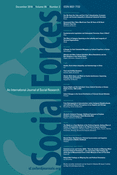-
Views
-
Cite
Cite
Byungkyu Lee, Dalton Conley, Robust Null Findings on Offspring Sex and Political Orientation, Social Forces, Volume 95, Issue 2, 7 December 2016, Pages 899–908, https://doi.org/10.1093/sf/sow068
Close - Share Icon Share
Extract
In an earlier paper, we deployed the European Social Survey (ESS) and the General Social Survey (GSS) to conduct the largest analysis to date examining the question of whether child sex affects parent political orientation. We found null effects in contrast to earlier, smaller studies. In the current issue, Hopcroft (2016) argues that our null findings may have been obtained due to sample restrictions and measurement error arising from the fact that we used the sex of the first child “residing” in home rather than the sex of the first “biological” child.
We believe that in their comment, Hopcroft largely restates the limitations we have already discussed in our original manuscript, adding only details of the GSS and ESS codebook for the readers. More importantly, she has confused identification issues (e.g., measurement error) with inference issues (e.g., sample restrictions) that we discussed in detail in three pages (Lee and Conley 2016, 1112–14). The goal of our systematic sample selection was to reduce the potential attenuation bias arising from measurement error. Further, by ignoring the period/country variations we showed, this critic missed one of the main points of our paper—we asked why we might observe contradictory findings in the UK and the United States in the first place. We concluded that such results are more likely due to publication bias (or possibly period heterogeneity) rather than to treatment effect heterogeneities or country differences. Nevertheless, we are open to the possibility that we made mistakes in our original paper. In the present response, we have decided to play devil's advocate by taking the opportunity to revisit our case.



